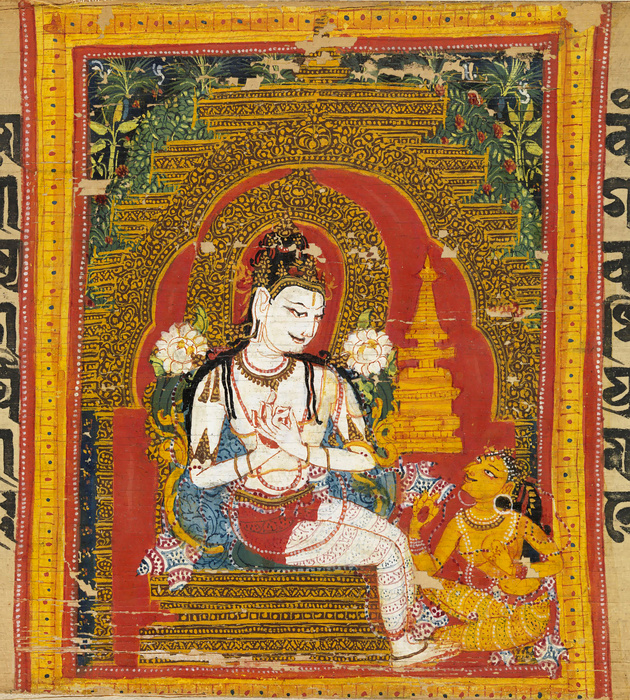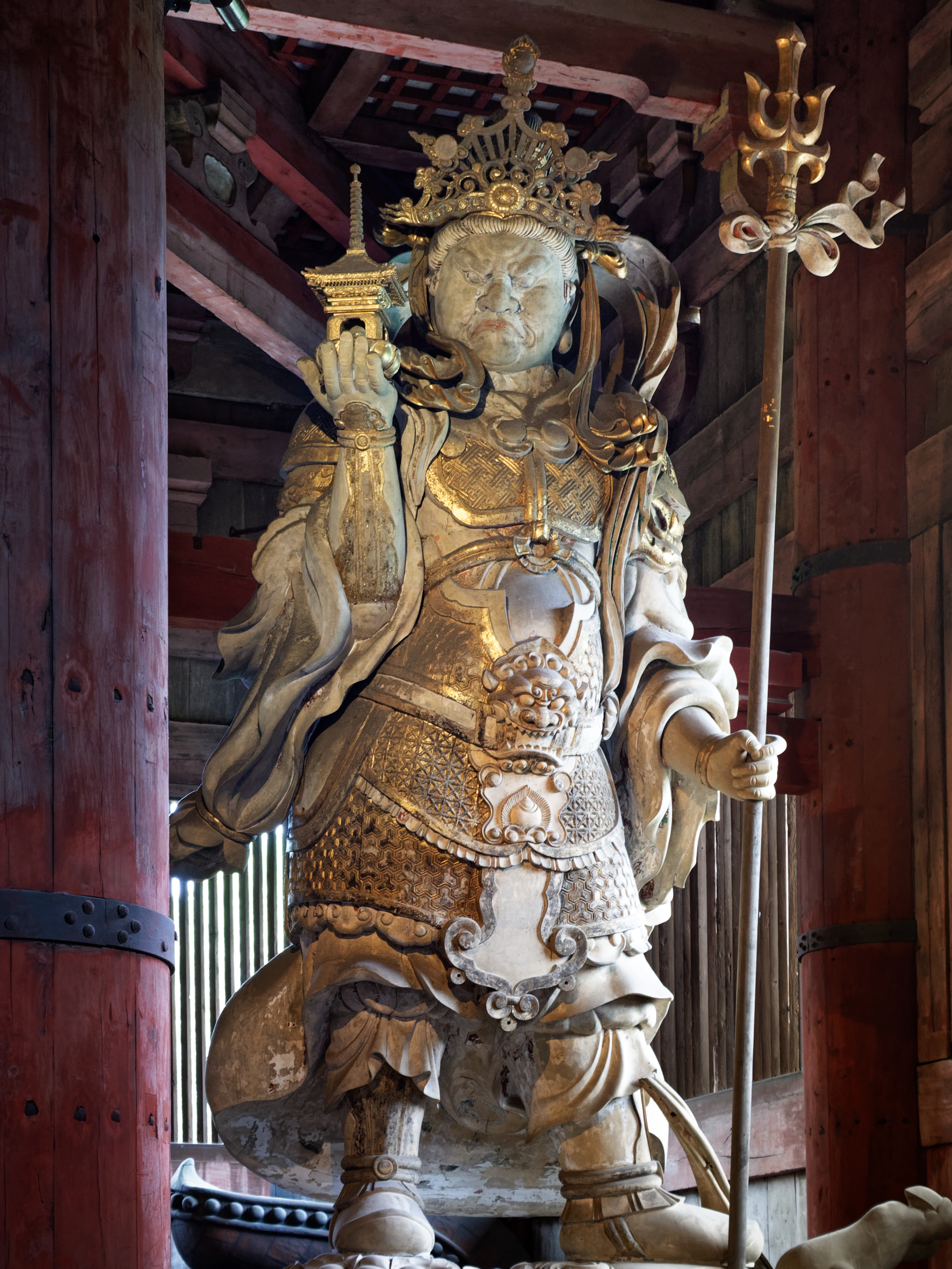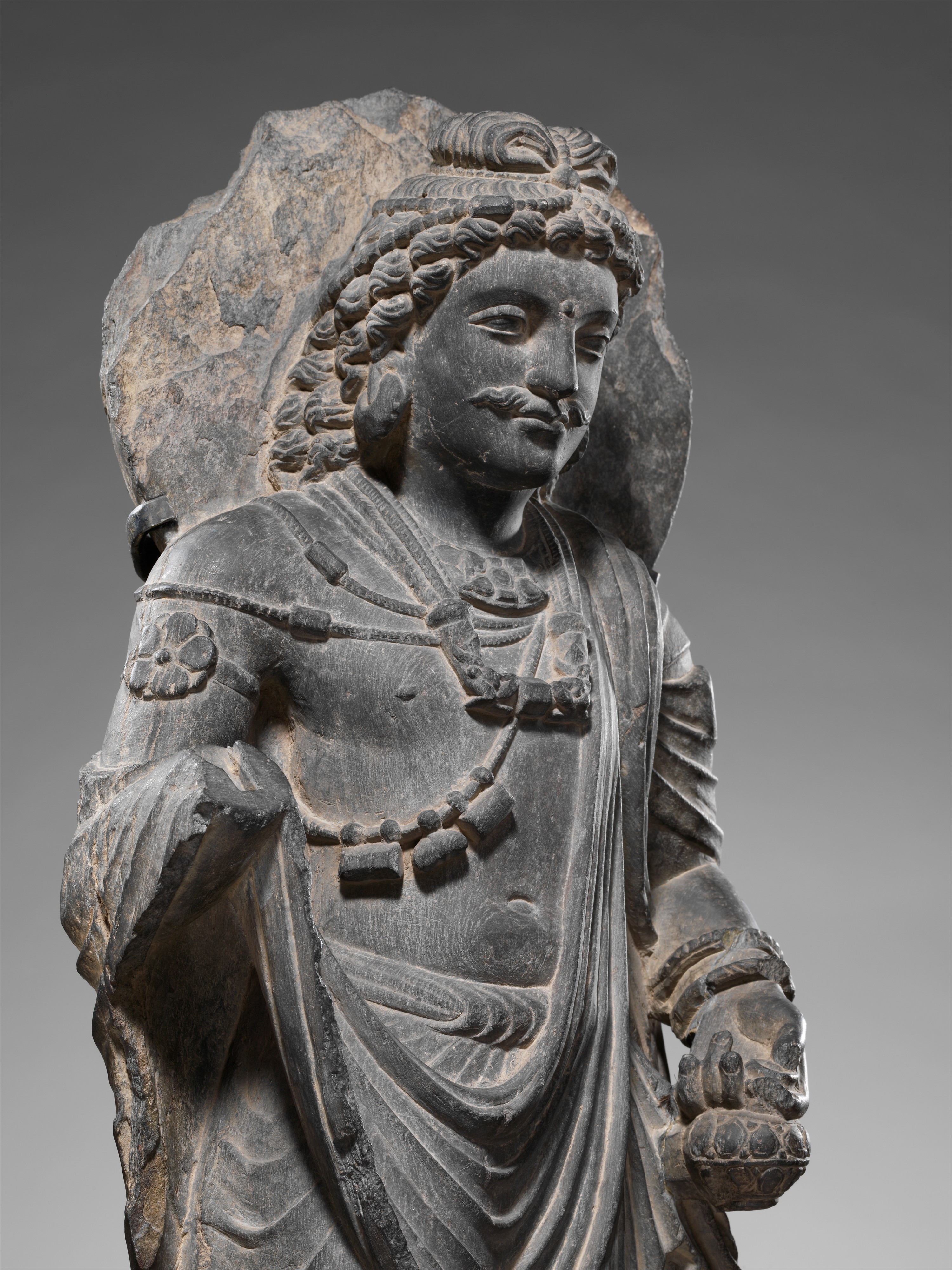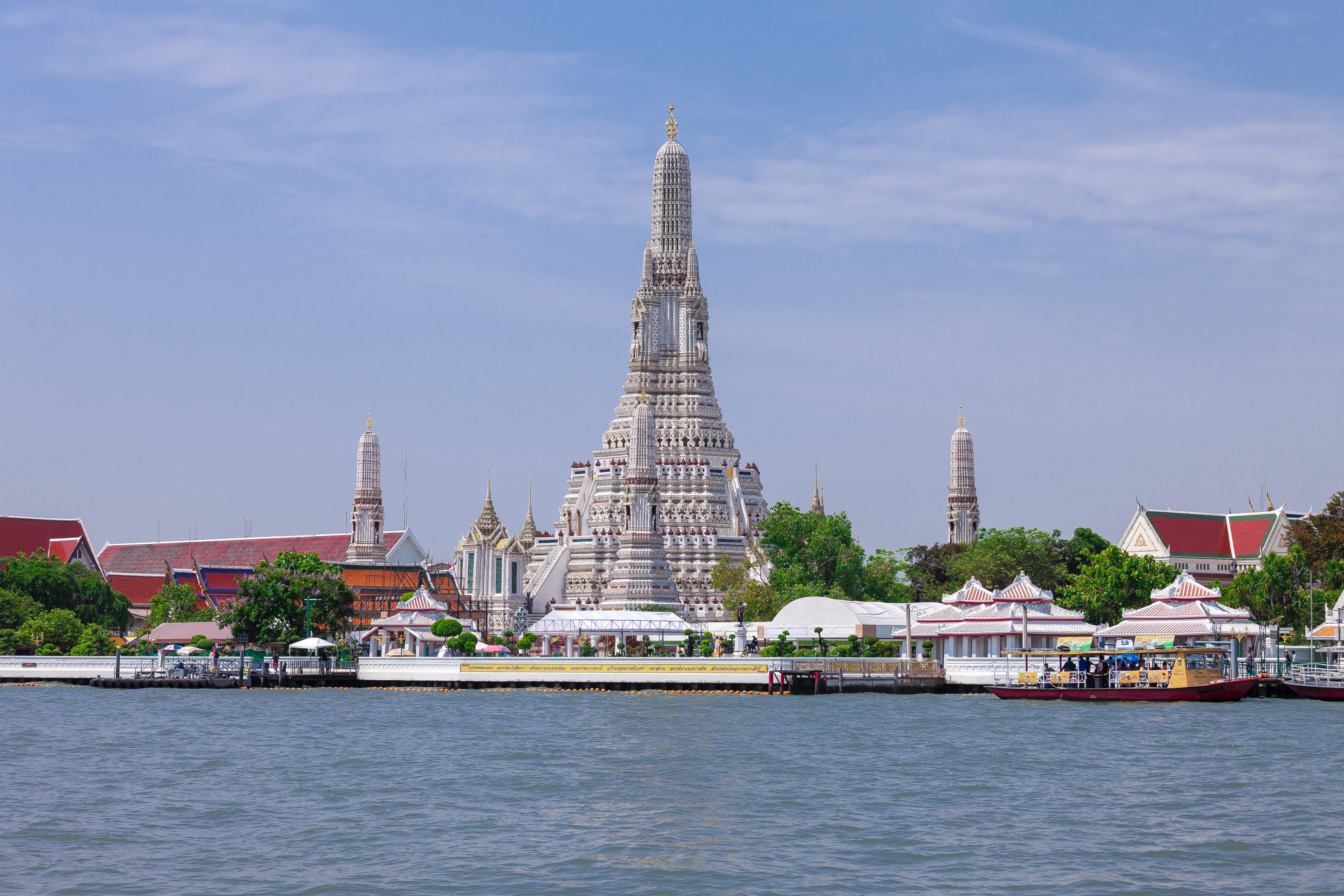|
Buddhas
In Buddhism, Buddha (, which in classic Indic languages means "awakened one") is a title for those who are spiritually awake or enlightened, and have thus attained the supreme goal of Buddhism, variously described as awakening or enlightenment (''bodhi''), '' Nirvāṇa'' ("blowing out"), and liberation (''vimokṣa''). A Buddha is also someone who fully understands the '' Dhārma'', the true nature of all things or phenomena ('' dhārmata''), the ultimate truth. Buddhahood (Sanskrit: ''buddhatva''; or ; zh, c=成佛) is the condition and state of being a Buddha. This highest spiritual state of being is also termed ''sammā-sambodhi'' (Sanskrit: ''samyaksaṃbodhi''; "full, complete awakening") and is interpreted in many different ways across schools of Buddhism. The title of "Buddha" is most commonly used for Gautama Buddha, the historical founder of Buddhism, who is often simply known as "the Buddha". The title is also used for other sentient beings who have achiev ... [...More Info...] [...Related Items...] OR: [Wikipedia] [Google] [Baidu] |
Mahayana
Mahāyāna ( ; , , ; ) is a term for a broad group of Buddhist traditions, Buddhist texts#Mahāyāna texts, texts, Buddhist philosophy, philosophies, and practices developed in ancient India ( onwards). It is considered one of the three main existing branches of Buddhism, the others being Theravāda and Vajrayāna.Harvey (2013), p. 189. Mahāyāna accepts the main scriptures and teachings of Early Buddhist schools, early Buddhism but also recognizes various doctrines and texts that are not accepted by Theravada Buddhism as original. These include the Mahāyāna sūtras and their emphasis on the ''bodhisattva'' path and Prajnaparamita, ''Prajñāpāramitā''. Vajrayāna or Mantra traditions are a subset of Mahāyāna which makes use of numerous Tantra, tantric methods Vajrayānists consider to help achieve Buddhahood. Mahāyāna also refers to the path of the bodhisattva striving to become a fully awakened Buddha for the benefit of all sentience, sentient beings, and is thus also ... [...More Info...] [...Related Items...] OR: [Wikipedia] [Google] [Baidu] |
Amitābha
Amitābha (, "Measureless" or "Limitless" Light), also known as Amituofo in Chinese language, Chinese, Amida in Japanese language, Japanese and Öpakmé in Tibetan script, Tibetan, is one of the main Buddhahood, Buddhas of Mahayana, Mahayana Buddhism and the most widely venerated Buddhist deities, Buddhist figure in East Asian Buddhism.阿彌陀 Amitâbha Digital Dictionary of Buddhism Amitābha is also known by the name Amitāyus ("Measureless Life"). Amitābha is the main figure in two influential Indian Buddhist Mahayana sutras, Mahayana Scriptures: the ''The Amitāyus Sutra, Sutra of Measureless Life'' and the ''Amitābha Sūtra''. According to the ''Sutra of Measureless Life'', Amitābha established a Pure Land, pure land of perfect peace and happiness, called Sukhavati, Sukh ... [...More Info...] [...Related Items...] OR: [Wikipedia] [Google] [Baidu] |
Buddhist Deities
Buddhism includes a wide array of divine beings that are venerated in various ritual and popular contexts. Initially they included mainly Indian figures such as devas, asuras and yakshas, but later came to include other Asian spirits and local gods (like the Burmese ''nats'' and the Japanese ''kami''). They range from enlightened Buddhas to regional spirits adopted by Buddhists or practiced on the margins of the religion. Buddhists later also came to incorporate aspects from the countries to which it spread. As such, it includes many aspects taken from other mythologies of those cultures. Buddhas A Buddha is a being who is fully awakened and has fully comprehended the Four Noble Truths. In the Theravada tradition, while there is a list of acknowledged past Buddhas, the historical Buddha Sakyamuni is the only Buddha of our current era and is generally not seen as accessible or as existing in some higher plane of existence. The Pali literature of the Theravāda tradi ... [...More Info...] [...Related Items...] OR: [Wikipedia] [Google] [Baidu] |
The Buddha
Siddhartha Gautama, most commonly referred to as the Buddha (),* * * was a śramaṇa, wandering ascetic and religious teacher who lived in South Asia during the 6th or 5th century BCE and founded Buddhism. According to Buddhist legends, he was born in Lumbini, in what is now Nepal, to royal parents of the Shakya clan, but Great Renunciation, renounced his Householder (Buddhism), home life to live as a wandering ascetic. After leading a life of mendicancy, asceticism, and meditation, he attained Nirvana (Buddhism), nirvana at Bodh Gaya, Bodh Gayā in what is now India. The Buddha then wandered through the lower Indo-Gangetic Plain, teaching and building a Sangha, monastic order. Buddhist tradition holds he died in Kushinagar and reached ''parinirvana'' ("final release from conditioned existence"). According to Buddhist tradition, the Buddha taught a Middle Way between sensual indulgence and severe asceticism, leading to Vimutti, freedom from Avidyā (Buddhism), ignora ... [...More Info...] [...Related Items...] OR: [Wikipedia] [Google] [Baidu] |
Other Power
Other power (Chinese: tālì 他力, Japanese: tariki, Sanskrit: *para-bala) is an East Asian Mahayana Buddhist concept which is discussed in Pure Land Buddhism and other forms of East Asian Buddhism. It generally refers to the power of a Buddha which can inspire someone, and take them to the Pure Land where they may easily become a Buddha. Other power is often contrasted with "self power" or , that is, attempting to achieve enlightenment through one's own efforts. According to Mark L. Blum, other power can be described as "something 'received' or 'influenced' from the sacred world beyond the self".Blum, Mark L. ''The Origins and Development of Pure Land Buddhism: A Study and Translation of Gyonen's Jodo Homon Genrusho,'' p. 8. Oxford University Press, Mar 21, 2002 Other power is also commonly called "Buddha-power" or "vow power" (願力, Chinese: yuànlì, Japanese: ganriki, Skt. praṇidhāna-vaśa), the latter referring to a Buddha's past bodhisattva vows (purvapraṇidhāna) ... [...More Info...] [...Related Items...] OR: [Wikipedia] [Google] [Baidu] |
Bodhisattva
In Buddhism, a bodhisattva is a person who has attained, or is striving towards, '' bodhi'' ('awakening', 'enlightenment') or Buddhahood. Often, the term specifically refers to a person who forgoes or delays personal nirvana or ''bodhi'' in order to compassionately help other individuals reach Buddhahood. In the Early Buddhist schools, as well as modern Theravāda Buddhism, bodhisattva (or bodhisatta) refers to someone who has made a resolution to become a Buddha and has also received a confirmation or prediction from a living Buddha that this will come to pass. In Theravāda Buddhism, the bodhisattva is mainly seen as an exceptional and rare individual. Only a few select individuals are ultimately able to become bodhisattvas, such as Maitreya. In Mahāyāna Buddhism, a bodhisattva refers to anyone who has generated '' bodhicitta'', a spontaneous wish and compassionate mind to attain Buddhahood for the benefit of all sentient beings. Mahayana bodhisattvas are spiritua ... [...More Info...] [...Related Items...] OR: [Wikipedia] [Google] [Baidu] |
Maitreya
Maitreya (Sanskrit) or Metteyya (Pali), is a bodhisattva who is regarded as the future Buddhahood, Buddha of this world in all schools of Buddhism, prophesied to become Maitreya Buddha or Metteyya Buddha.Williams, Paul. ''Mahayana Buddhism: The Doctrinal Foundations 2nd edition.'' Routledge, 2009, p. 218. In some Buddhist texts, Buddhist literature, such as the ''Amitabha Sutra'' and the ''Lotus Sutra'', he is also referred to as Ajitā (Invincible, Unconquerable). In Tibetan Buddhism he is known as the "Lord of Love" or the "Noble Loving One" (Pakpa Jampa). The root of his name is the Sanskrit word ''maitrī'' (Pali: ''metta''; meaning friendliness, loving-kindness). The name Maitreya is also related to the Indo-Iranian languages, Indo-Iranian name Mitra.Jayarava, Visible Mantra: Visualising & Writing Buddhist Mantras, pp. 142-43. 2011 In Hinduism, Maitreya is prophesied to be the king of Shambala, which is also the birthplace of the Kalki Avatar. In all branches of Buddhism, ... [...More Info...] [...Related Items...] OR: [Wikipedia] [Google] [Baidu] |
Buddhist Cosmology
Buddhist cosmology is the description of the shape and evolution of the Universe according to Buddhist Tripitaka, scriptures and Atthakatha, commentaries. It consists of a temporal and a spatial cosmology. The temporal cosmology describes the timespan of the creation and dissolvement of alternate universes in different aeons. The spatial cosmology consists of a vertical cosmology, the various planes of beings, into which beings are reborn due to their merits and development; and a horizontal cosmology, the distribution of these world-systems into an infinite sheet of existential dimensions included in the cycle of samsara. The entire universe is said to be made up of five basic elements of Earth (classical element), Earth, Water (classical element), Water, Fire (classical element), Fire, Air (classical element), Air and Aether (classical element), Space. Buddhist cosmology is also intwined with the belief of Karma in Buddhism, Karma. As a result, some ages are filled with pr ... [...More Info...] [...Related Items...] OR: [Wikipedia] [Google] [Baidu] |
Buddhism
Buddhism, also known as Buddhadharma and Dharmavinaya, is an Indian religion and List of philosophies, philosophical tradition based on Pre-sectarian Buddhism, teachings attributed to the Buddha, a wandering teacher who lived in the 6th or 5th century Before the Common Era, BCE. It is the Major religious groups, world's fourth-largest religion, with about 500 million followers, known as Buddhists, who comprise four percent of the global population. It arose in the eastern Gangetic plain as a movement in the 5th century BCE, and gradually spread throughout much of Asia. Buddhism has subsequently played a major role in Asian culture and spirituality, eventually spreading to Western world, the West in the 20th century. According to tradition, the Buddha instructed his followers in a path of bhavana, development which leads to Enlightenment in Buddhism, awakening and moksha, full liberation from ''Duḥkha, dukkha'' (). He regarded this path as a Middle Way between extremes su ... [...More Info...] [...Related Items...] OR: [Wikipedia] [Google] [Baidu] |
Nirvana (Buddhism)
Nirvana or nibbana (Sanskrit: निर्वाण; International Alphabet of Sanskrit Transliteration, IAST: '; Pali: ') is the extinguishing of the passions, the "blowing out" or "quenching" of the activity of the grasping mind and its related unease. Nirvana is the goal of many Buddhism, Buddhist paths, and leads to the soteriological release from dukkha ('suffering') and rebirths in ''Saṃsāra (Buddhism), saṃsāra''. Nirvana is part of the Third Truth on "cessation of ''dukkha''" in the Four Noble Truths, and the "''summum bonum'' of Buddhism and goal of the Noble Eightfold Path, Eightfold Path." In all forms of Buddhism, Nirvana is regarded as the highest or supreme religious goal. It is often described as the unconditioned or uncompounded (Skt.: asaṃskṛta, Pali: asankhata), meaning it is beyond all forms of conditionality — not subject to change, decay, or the limitations of time and space. Nirvana is typically seen as being outside the realm of dependent ari ... [...More Info...] [...Related Items...] OR: [Wikipedia] [Google] [Baidu] |
Theravada
''Theravāda'' (; 'School of the Elders'; ) is Buddhism's oldest existing school. The school's adherents, termed ''Theravādins'' (anglicized from Pali ''theravādī''), have preserved their version of the Buddha's teaching or ''Dharma (Buddhism), Dhamma'' in the Pāli Canon for over two millennia. The Pāli Canon is the most complete Buddhist canon surviving in a Indo-Aryan languages, classical Indian language, Pāli, which serves as the school's sacred language and ''lingua franca''.Crosby, Kate (2013), ''Theravada Buddhism: Continuity, Diversity, and Identity'', p. 2. In contrast to Mahāyāna and Vajrayāna, Theravāda tends to be conservative in matters of doctrine (''pariyatti'') and monastic discipline (''vinaya''). One element of this Religious conservatism, conservatism is the fact that Theravāda rejects the authenticity of the Mahayana sutras (which appeared onwards). Consequently, Theravāda generally does not recognize the existence of many Buddhas and bodhisattva ... [...More Info...] [...Related Items...] OR: [Wikipedia] [Google] [Baidu] |
History Of Buddhism
The history of Buddhism can be traced back to the 5th century BCE. Buddhism originated from Ancient India, in and around the ancient Kingdom of Magadha (Mahajanapada), Magadha, and is based on the teachings of the renunciate Siddhartha Gautama, Siddhārtha Gautama. The religion evolved as it spread from the northeastern region of the Indian subcontinent throughout Central Asia, Central, East Asia, East, and Southeast Asia. At one time or another, it influenced most of Asia. The history of Buddhism is also characterized by the development of numerous movements, Schism, schisms, and philosophical schools. Among them were the Theravada, Theravāda, Mahayana, Mahāyāna and Vajrayana, Vajrayāna traditions, with contrasting periods of expansion and retreat. Shakyamuni The Buddha, Buddha (5th cent. BCE) Siddhārtha Gautama (5th cent. BCE) was the historical founder of Buddhism. The early sources state he was born in the small Shakya (Pali: Sakya) Republic, which was part of the K ... [...More Info...] [...Related Items...] OR: [Wikipedia] [Google] [Baidu] |










